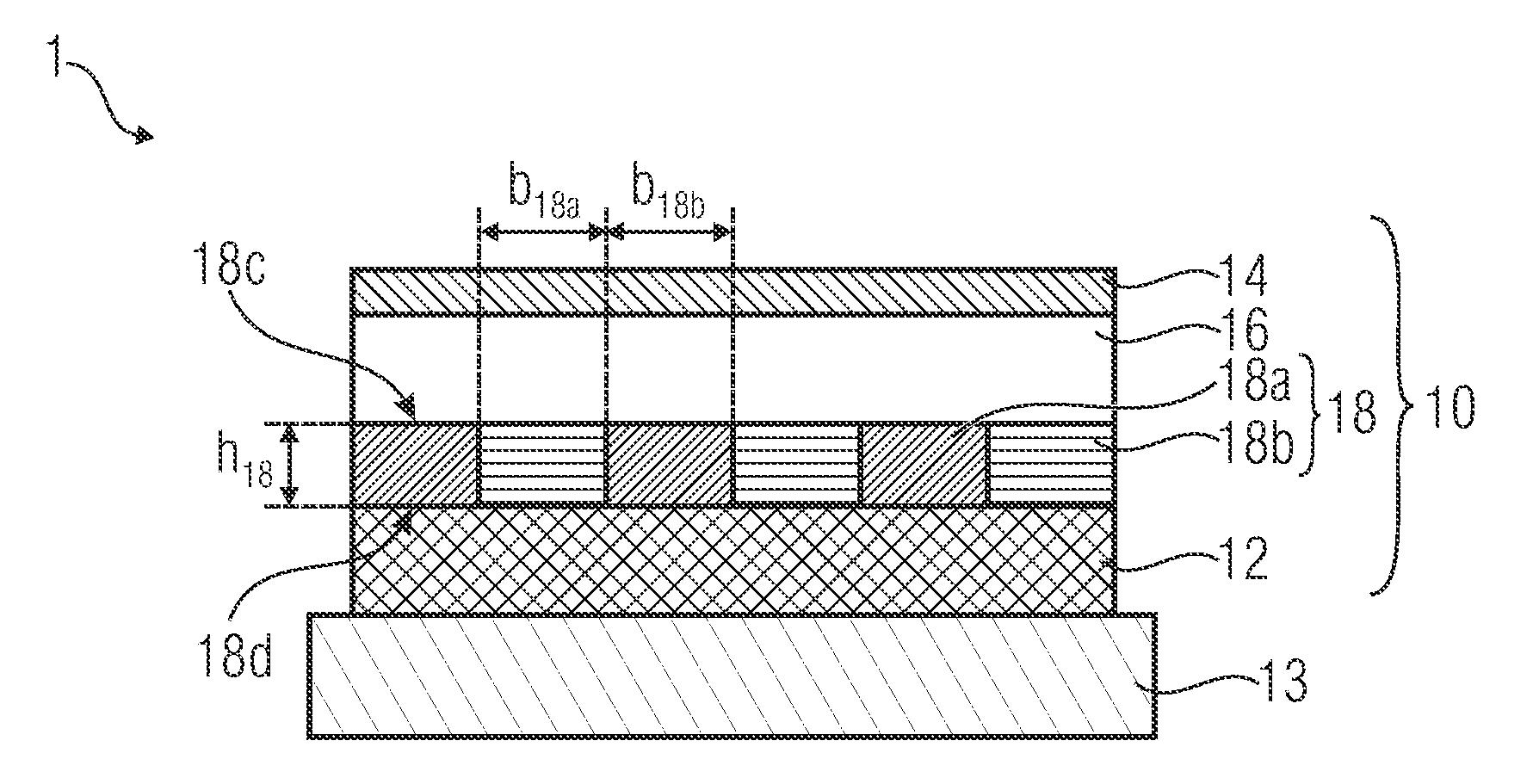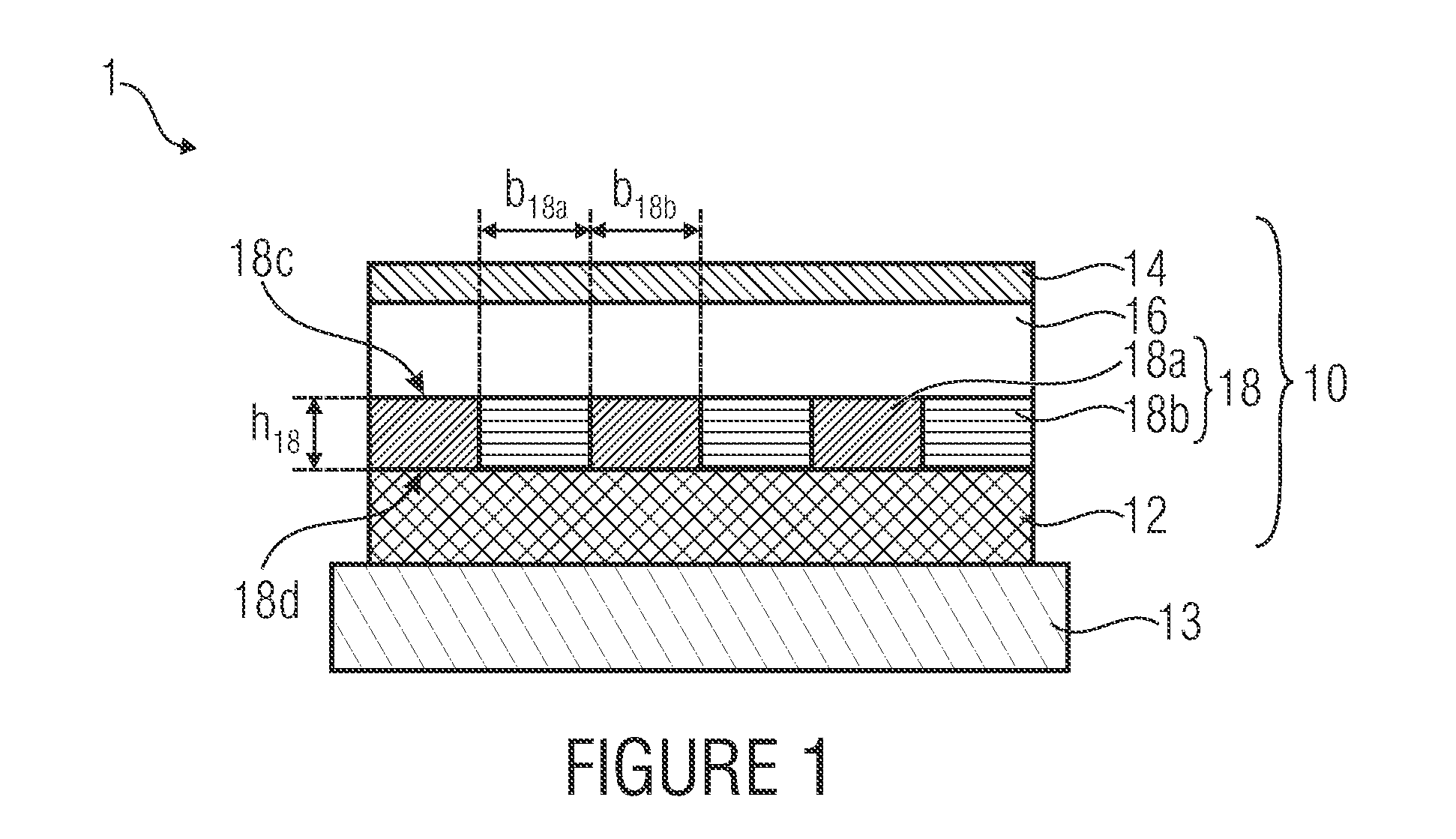Electroluminescent light emission device comprising an optical lattice structure and method for manufacturing same
a technology of light emission device and optical lattice structure, which is applied in the direction of thermoelectric device junction materials, semiconductor devices, electrical apparatus, etc., can solve the problems of deterioration in coupling out light, limited overall efficiency, and difficulty in integrating optical lattice structures between electrodes, so as to improve coupling out efficiency and improve system efficiency of such applications. , the effect of optimizing the coupling out ligh
- Summary
- Abstract
- Description
- Claims
- Application Information
AI Technical Summary
Benefits of technology
Problems solved by technology
Method used
Image
Examples
Embodiment Construction
[0030]Before discussing the present invention below in greater detail using drawings, it is pointed out that identical elements and structures for elements and structures having the same function or the same effect, in the different figures, are provided with same reference numerals such that the description presented in the different embodiments of the elements and structures provided with same reference numerals may be interchanged and mutually applied.
[0031]A planar electroluminescent light emission device 1 in accordance with a first embodiment of the present invention will be described making reference to FIG. 1. In particular, FIG. 1 shows a layer arrangement 10 of the light emission device 1 applied onto a substrate 13. The layer arrangement 10 comprises a first electrode layer 12 and a second electrode layer 14 which both comprise a conductive material such as, for example, aluminum. A light-emitting layer 16 made of an organic material is arranged between the two electrode ...
PUM
 Login to View More
Login to View More Abstract
Description
Claims
Application Information
 Login to View More
Login to View More - R&D
- Intellectual Property
- Life Sciences
- Materials
- Tech Scout
- Unparalleled Data Quality
- Higher Quality Content
- 60% Fewer Hallucinations
Browse by: Latest US Patents, China's latest patents, Technical Efficacy Thesaurus, Application Domain, Technology Topic, Popular Technical Reports.
© 2025 PatSnap. All rights reserved.Legal|Privacy policy|Modern Slavery Act Transparency Statement|Sitemap|About US| Contact US: help@patsnap.com



